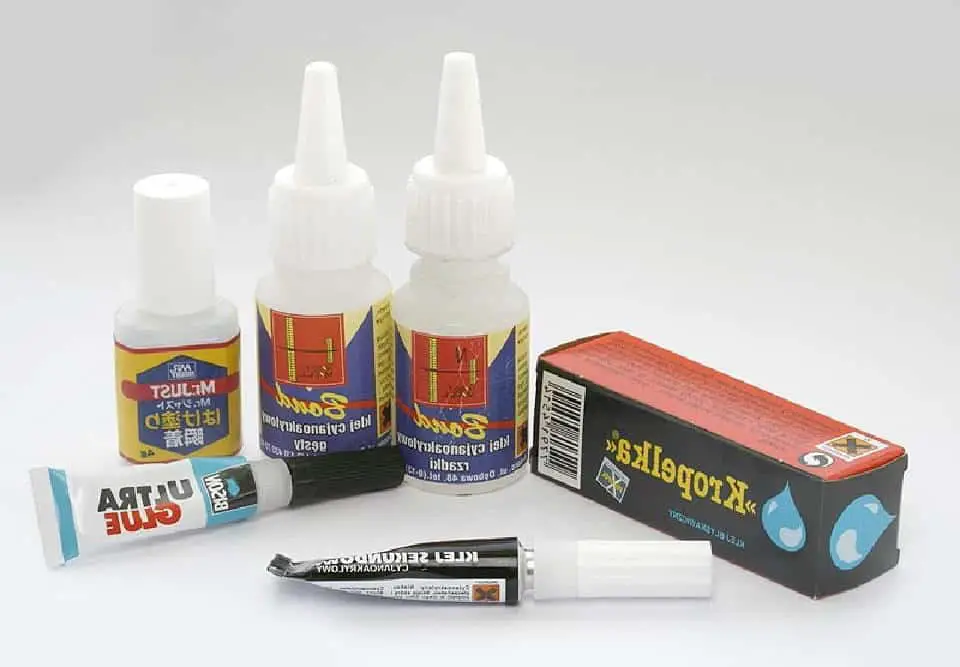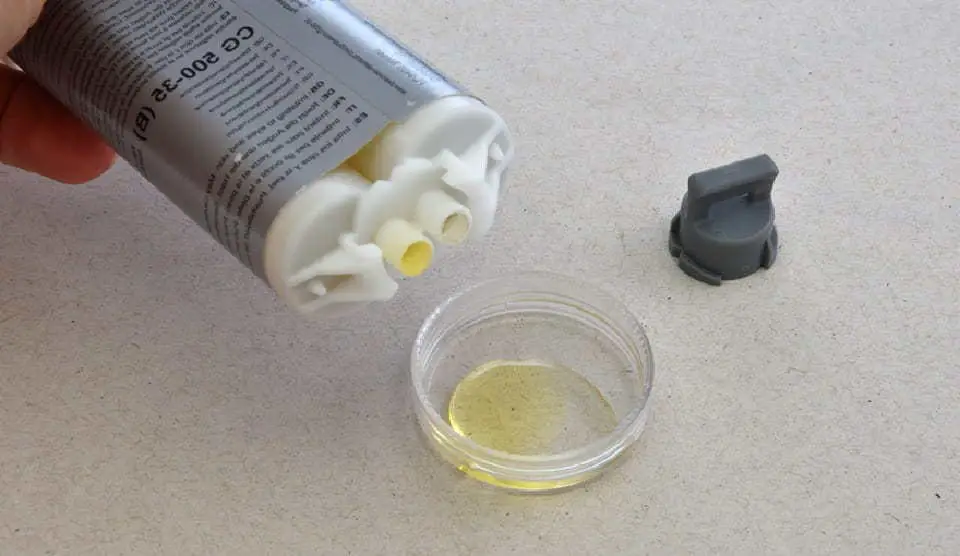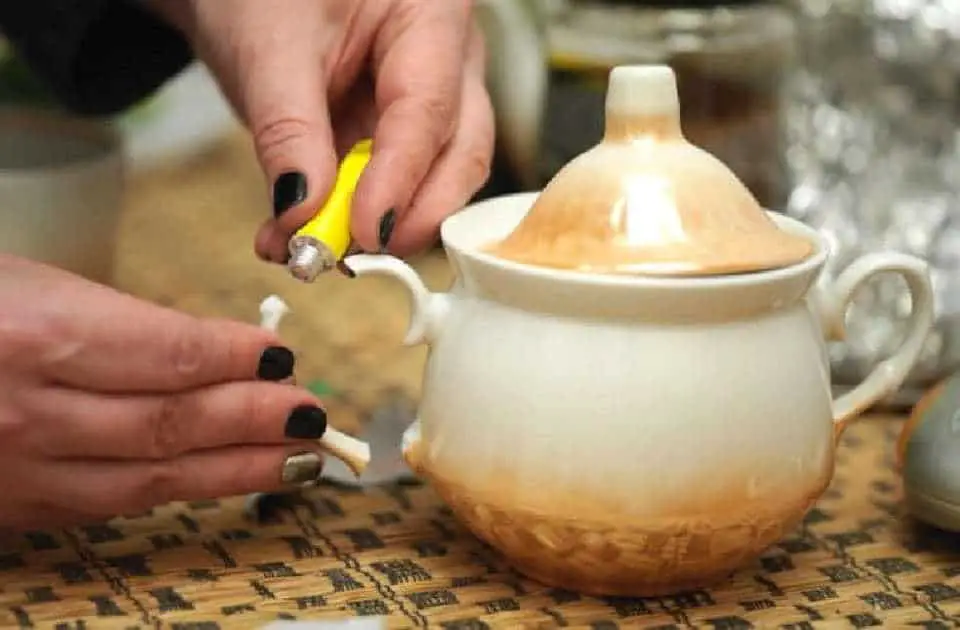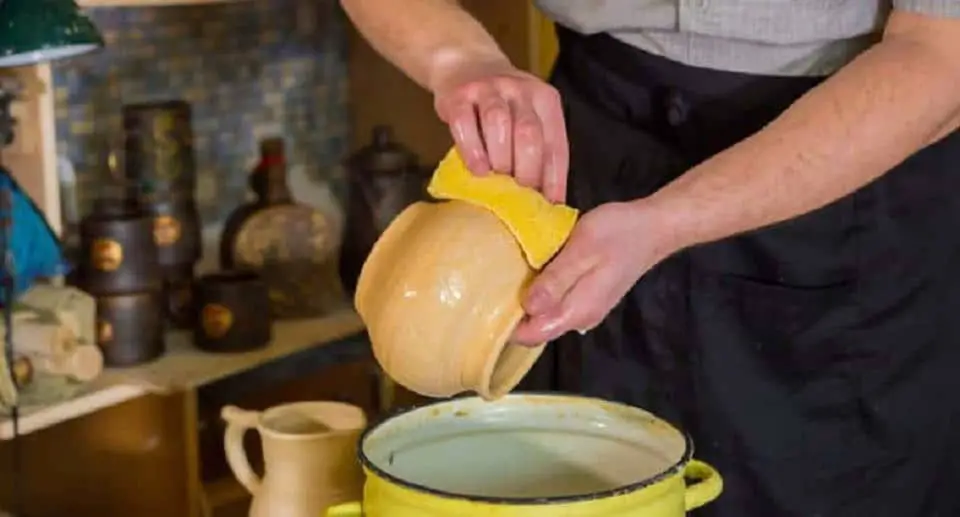Ceramics are everywhere around us and a favorite decorative piece in many houses. They serve an antique look while being extremely durable and sturdy.
Breaking a precious ceramic item is depressing, but you can repair it if you have all shattered pieces and a quality adhesive. How to glue ceramic back together?
Pierce the shattered pieces back together by following the below steps:
- Gather all the pieces.
- Prepare the glue
- Apply ceramic glue
- Remove any spilled or excess glue
Time to delve into the detailed process with Gluecare!
Things You’ll Need

Image source: wikimedia
- Shattered ceramic pieces
- Adhesive
- Clamps or duct tape
Quality adhesive can recover the normal condition of your broken pieces without even showing a sign of damage if used correctly.
So, prepare a reliable epoxy or ceramic glue with duct tape or clamp beforehand to fix the small pieces in place while drying. They’re a winning combo for this job. https://en.m.wikipedia.org/wiki/Epoxy
How To Glue Ceramic Back Together: Step-By-Step Guide
Once you have all the kits ready, it’s time to start the repairing task – first things first.
Planning

First of all, you need to collect all the shattered pieces together and arrange them in the previous order to check whether there’s a missing piece or not.
Also, you can imagine which piece goes first when sticking them to each other. Usually, it’s advisable to begin with the bigger ones.
Prepare Your Glue

Five-minute epoxy is good to go since it will dry slowly, so you can easily fix it if you put a piece in the wrong place.
Generally, most epoxy contains a formula of two steps, whereas some epoxy is ready to use right away.
Pick food-safe adhesive if you’re going to repair cracked cookware, kitchenware, or plates with epoxy.
Before starting, you’d better read the manual instructions on using the adhesive. Get a decent amount of adhesive for the repairing purpose, then spread it depending on your item’s size.
You can spread or mix the glue with a popsicle stick.
Applying The Glue

Credite: toolsfirst
To apply the adhesive precisely, you have to place your broken ceramics in a steady position. A bowl filled with rice or sand or PVC pebble will help with this.
As said, gluing the bigger ones first will make the work more straightforward.
So, use a toothpick or popsicle stick to add epoxy to one side of a shattered piece and stick it to another one.
Ensure to align the pieces perfectly and squeeze the glued pieces back together.
Relate posts
- How to Glue Granite Together: a Step by Step Tutorial
- How to Glue Fabric to Wood: Effective Materials and Methods
- Quick & easy: How to Glue Bricks Together
Remove Excess Glue

Credit: thepotterywheel
Once you successfully stick one ceramic piece, press it tightly and wait for it to dry. Then, go on with another part.
Keep on until you finish sticking all the broken pieces to each other and ensuring that you’ve joined them correctly in place.
If you notice worn-out adhesive, don’t worry. You can gently remove excess or spilled epoxy after it has completely cured using a safety razor.
FAQS
Concerning repairing broken ceramics, you may have many other questions about the type of adhesive or how to fix a specific ceramic item. This section covers all those typical questions.
How To Choose The Best Glue for Ceramic Repairs?
There are some considerations to take note of when choosing a ceramic adhesive.
Glue type
Tons of glue types are available, but people would go for superglue and epoxy in most cases.
Superglue utilizes cyanide-derived cyanoacrylate to produce a solid bond. It dries faster than epoxy or other average glues and does not require mixing.
This type is an excellent choice for creating bonds in thin spaces and lightweight ceramic.
Meanwhile, epoxy includes both a resin and a hardener. It provides a robust bond when mixed, which is cool for ceramic.
Opacity and drying time
Superglue usually takes a shorter time to dry than epoxies, but they don’t create durable bonds as epoxies. Indeed, we can wait a couple of hours for ceramics to completely dry.
The thing to look at is drying opacity.
While most glues dry transparent over time, so you don’t notice any spilled epoxy or scars on your items, some change their colors when drying.
If you want to make the adhesive a filler, ensure to choose one matching your ceramic’s color.
Food safety
One of the most important factors to consider is whether the epoxy is safe for kitchenware and around food or not.
The chemicals make those adhesives strong, but chemicals should not be in your food or around your cabinet.
If you’re fixing tableware or something to serve food, check if the product has an
FDA approval stamp. This certification means it’s ceramic glue food safe.
Epoxy Vs. Super Glue: Which One Works Better For Ceramics?
Generally, epoxy is more durable and stronger than superglue, but it requires mixing to gain the proper ratio of compounds before use.
Superglue is the way to go if you already have your shattered pieces around and just need a quality adhesive to glue those pieces back together.
Meanwhile, epoxy will be a wise choice for a more long-lasting and durable solution and the things frequently exposed to water.
What is the best glue for repairing ceramics
Epoxy or ceramic glue
Is Gorilla Glue good for ceramics?
Gorilla Super Glue can be used on a variety of materials, including paper, leather, wood, metal, ceramic, and more. So you can use gorilla super glue for cemramics
How Do You Glue Ceramic Mugs?
- Gather tools: All you need are touch-up glaze or gap-filling adhesive, soap, water, and an emery board.
- Clean and dry the chipped surfaces.
- Add epoxy: Follow the manual instructions of the product. Fill in cracks or chips, restore any lost gaps to protect your mug, and proceed with further chipping.
- Wait for the glue to dry and clean up.
Conclusion
Ceramic items have a fascinating beauty that goes with time. They’re not only expensive but also delicate products of traditional handicrafts. Thus, any accidental damage will break our hearts. You can totally cure your precious items with the right adhesive and steps. Learn how to glue ceramic back together now to save your favorite things!
